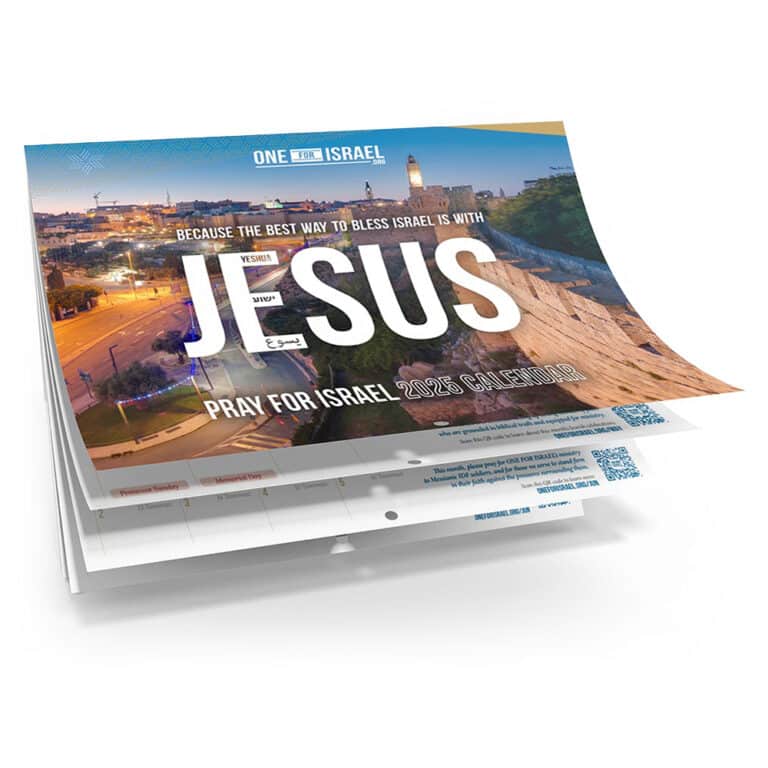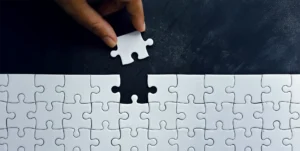Over the last years, the rabbis in Israel have been working hard to challenge and attack the New Testament’s credibility.
We decided to collect and summarize for you their ten most famous “contradictions”.
Enjoy!
Contradiction #1:
Rabbi Yossi Mizrahi claims:
“How can it be that in the NT it is written that Jacob went down to Egypt with 75 people while the OT states that Jacob went to Egypt with only 70 people.”
This is what happens when they don’t teach history at a yeshiva. Mizrahi quotes from the Masoretic text of the Hebrew OT. This is the version that most of us have at home. This version was edited by the Masoretes about 1000 years ago. The Masoretic text is one out of a number of textual versions of the OT. For example, haPshita, Targum Jonathan, Yerushalmi, Targum Onkelos, the Septuagint, the Vulgate, Qumran and more.
2000 years ago there was no Masoretic text. The authors of the NT could not quote from the Masoretic text even if they wanted to. So where did they quote from? From the Septuagint. This version was edited by 72 Jewish scholars in the 2nd century BC. The Masoretic text in Genesis 46 reads that 70 people go down to Egypt, following Jacob.
However, the Septuagint states in the same chapter that there were 75 people. The question “where did those five more people come from?” should have been answered by the 72 Jewish scholars and not the authors of the NT.
However, it can be assumed that the 72 scholars had decided to list Joseph’s descendants as well, namely the two sons of Manasseh along with Ephraim’s two sons and his grandson. Another possible explanation is that they decided to count Jacob and his four wives as well: Leah, Zilpah, Rachel and Bilhah.
Contradiction #2:
In the Jewish encyclopedia Daat, published by the Herzog College for Jewish studies, it says:
“There are numerous contradictions in the NT: It says that Jesus will live in Nazareth in order to fulfill what was spoke by the prophets that ‘he will be called a Nazarene.’ (Matthew 2:23). But there is no such verse in the OT.” (Jewish Encyclopedia Daat)
There is no contradiction here, Matthew is not quoting. He doesn’t claim to be quoting. That’s why he doesn’t use quotation marks. Whenever Matthew does quote from a specific OT book he always indicates that. For example,
“This took place to fulfill what the Lord had spoken by the prophet…”
or,
“This was to fulfill what was spoken by the prophet Isaiah:”
or,
“This was to fulfill what was spoken by the prophet…”
As you surely noticed Matthew says “spoken by the prophets”, plural. And not “as the prophet spoke”, singular. This is because Matthew does not quote any verse but explains a general idea that was expressed by the prophets. In this case, when Matthew says “so that what was spoken by the prophets might be fulfilled, that he would be called a Nazarene (Netzer)” he refers to several different passages in the OT.
Isaiah 11:1
“A shoot will come up from the stump of Jesse; from his roots a Branch (Netzer) will bear fruit.”
Jeremiah 31:6
“There will be a day when watchmen (Netzerim) cry out on the hills of Ephraim, ‘Come, let us go up to Zion, to the Lord our God.’”
Isaiah 49:6
“He (God) says: ‘It is too small a thing for you to be my servant to restore the tribes of Jacob and bring back the preserved (Netzerim) of Israel. I will also make you a light for the Gentiles, to be my salvation to the ends of the earth.”
And there is more:
The word “Netzer” in Hebrew means “root” in the OT, or “branch”. The OT and even the Talmud give the Messiah the titles “root” and “branch”. To summarize this, Matthew does not make up OT verses but rather sheds light on a general idea that was expressed through the prophets.
Contradiction #3:
Yossi Mizrahi says:
“Quotation from the NT: ‘Jakob and his sons went down to Egypt and died there and they were taken to Shechem and buried there.’ Wrong. They were buried in Hebron, says the OT. What? Does God not remember where they buried Jacob? That guy who bluffed and wrote the NT was not educated. He was at the level of an absolute beginner.”
Right, and in Genesis 50:13 it is written that Jacob alone was brought to be buried in Hebron. The place were Jacob’s sons were buried is not mentioned in the OT. And the NT doesn’t contradict that. It seems like it’s Mizrahi’s reading comprehension that is on absolute beginners’ level here. This time, let’s see what is actually written in the NT:
“Then Jacob went down to Egypt, where he and our ancestors died. Their bodies were brought back to Shechem and placed in the tomb…” (Acts 7:15-16)
The New Testament is not talking here about Jacob’s grave. Rather it mentions that “our ancestors” were brought to Shechem. The ancestors are, as a matter of fact, the sons of Jacob. From them the 12 tribes evolved. They were brought to Shechem, not Jacob.
So who then is the uneducated, confused bluffer? You decide.
Contradiction #4:
In the Gospel of Matthew it says:
“Then what was spoken by Jeremiah the prophet was fulfilled: ‘They took the thirty pieces of silver, the price set on him by the people of Israel, and they used them to buy the potter’s field, as the Lord commanded me'” (Matthew 27:9-10).
Rabbi Zalman Kravitz points out a contradiction here and asks:
“Where does Jeremiah prophecy about 30 pieces of silver, as Matthew claims?”
Right. In the book of Jeremiah itself you won’t find such a verse. But in the book Zechariah, chapter 11 verse 13, you will find that verse. So why does Matthew say that the verse is found in Jeremiah if it’s from the book of Zechariah? 2000 years ago the division of the OT was different than the division we know today. And it was common practice to call a set of books by the name of one of the books it contained. The Pentateuch (Torah) was called “Moses”. The writings were labeled as “Psalms” or “David”. The same goes for the prophetic writings. They called them “Isaiah” and “Jeremiah”. That is to say that Matthew refers to the prophets as “Jeremiah”. Mark, by the way, did the exact same thing. In the first chapter of his gospel he refers to the book of Malachi using the label “Isaiah”. In brief, “Jeremiah” and “Isaiah” served as a label for all the prophets, maybe since they are the longest prophetic books. By the way, whoever takes a look at the Tractate “Bava Batra” in the Talmud will notice that the sages had the same habit of labeling books.
Contradiction #5:
In the Gospel of Matthew, chapter 26, Judas Iscariot is bribed by the priests. He agrees to betray Jesus for 30 silver shekels. And he promises to hand Jesus over to them, giving them a sign: the one he kisses on the cheek is Jesus. This is to make sure they’d know who to arrest in the dark of the night, out of all the people gathered there. Rabbi Daniel Asor is sure he found a huge discrepancy in the NT and writes the following:
“Why would the Wise need this kiss as a sign, if Jesus was so popular and widely known, as the gospels say.”
Here we see one of the challenges when it comes to reading ancient texts from a modern perspective. Rabbi Asor apparently expected that Judas would take a picture of Jesus with his smartphone or at least would email Jesus’ Facebook profile picture to the priests. So that they could print it and give it to the high priest’s servant, who was sent by the high priest to get Jesus.
Quick reminder, 2000 years ago there were no smartphones, cameras or printers. Jesus’ reputation surely preceded him, but that doesn’t mean that the high priest’s servant had a poster of Jesus in his room.
Contradiction #6:
Let’s continue with Rabbi Daniel Asor. This time he says:
“Where did they take the child after giving birth, to Egypt or to Jerusalem? Matthew 2:4 says: ‘So he got up, took the child and his mother during the night and left for Egypt.’ But Luke 2:22 says ‘And when the time came for their purification according to the Law, they brought him up to Jerusalem to present him to the Lord.'”
The simple answer: Luke describes the time when Jesus is taken to Jerusalem to redeem the firstborn and to bring a sacrifice of purification as was commanded of every woman after giving birth. Matthew describes another time, when Joseph and Mary were living in Bethlehem. Joseph was warned that Herod wanted to kill Jesus. So the couple fled to the Jewish community in Egypt.
Rabbi Asor, if someone tells you that he saw Eitan eat Cornflakes today and someone else tells you that he saw Eitan eat Schnitzel today, is that a contradiction? Or could it be that Eitan ate both Cornflakes and Schnitzel? Simply at different times. I don’t even like Cornflakes.
Contradiction #7:
We already started with Rabbi Asor, so let’s keep going with him. He writes as follows:
“Paul writes in his letter to the Romans: ‘Likewise, my brothers, you also have died to the law through the body of Christ, so that you may belong to another, to him who has been raised from the dead, to bear fruit for God.’ Romans 7:4. The question here is when have the Romans been under the law? Did they get the law at Mount Sinai?”
Note what Paul the Apostle says three verses before that:
“Or do you not know, brothers, for I am speaking to those who know the law…” (Romans 7:1).
Could it be that Jews lived outside of Israel? Could it be that there were Jews in Rome? A quick search on Wikipedia reveals that in the first century AD indeed ten thousands of Jews lived in Rome. Some of them were members of this messianic community, and Paul is speaking to them.
Rabbi Asor seems not to know this but the fact that someone is Jewish does not mean that he can’t be a citizen of Moscow or Miami or London or of Rome.
Contradiction #8:
You didn’t really think that we would let go of Rabbi Asor already, did you? This time, he really embarrassed himself. In Matthew chapter 26 the following things are described as part of the Passover meal:
“Now as they were eating, Jesus took bread, and after blessing it broke it and gave it to the disciples…”
Rabbi Asor raises the following claim:
“Did Jesus eat bread on the first day of the Feast of Unleavened Bread? It is forbidden to eat leaven on Passover.”
Rabbi Asor wonders how is it that Jesus ate bread on Passover. In this, the embarrassing ignorance of the Rabbi Asor is revealed. Note the opening passage of the Passover reading – the Haggada:
“This is the bread of poverty that our forefathers ate in Egypt” (Passover Haggada).
Bread? In the readings for Passover? One might wonder if Rabbi Asor was to claim that there are contradictions in the Passover reading.
But seriously, “bread” is a general term describing a category, a word that can be used to refer to many different types of bread. Those with leaven and those without. In other words, this is like blaming Rabbi Asor for eating pork, just because it is reported that he ate “meat”.
Contradiction #9:
You guessed right, it’s Rabbi Asor again! He writes of the same “contradictions” as suggested by other rabbis, but more straight to the point. And this time, we look at the most famous sermon of Jesus, called the “Sermon on the Mount”. Rabbi Asor writes:
“The ‘Sermon on the Mount’. Matthew claims that Jesus’ sermon took place on a mountain. Luke, on the other hand, that it took place on a plain. Mark writes that it was preached in a boat on the sea.” So where did the “Sermon on the Mount” take place? On a mountain or in a boat? As a matter of fact, Mark doesn’t even mention the “Sermon on the Mount”. He talks about a different sermon, a sermon in parables. Mark himself writes:
“And he was teaching them many things in parables…” (Mark 4:2).
Luke points out that the sermon was on a plain. What Luke is saying is that Jesus gathered the people at a spot on the mountain that was relatively flat so that a bigger crowd could fit. Comparable to the Golan Heights or mount Arena on the way to Jerusalem with a plateau and an outlook. This could explain it if Rabbi Asor is indeed right and Matthew and Luke really did refer to the same sermon, something that cannot be said for certain.
To the rabbis who attacked the NT we’ll throw out the following challenges:
Please settle for us the list of contradictions between science and the Talmud, or the many contradictions between the Talmud and the OT.
A researcher of the OT and especially of the NT is someone who has spent years of his life and has studied in an academic setting with Biblical Greek, ancient manuscripts, the history of the 2nd Temple period, hermeneutics, semantics and more to specialize and get the best perspective possible when it comes to the cultural, historical, religious and political background… in other words, searching the context of the text to understand what the writer meant. When someone hopes to follow in the footsteps of such a researcher without having any background or knowledge in these things he’s prone to embarrass himself with questions he doesn’t have answers for. Not that these answers don’t exist but he simply doesn’t have the tools to find them. Believe me, it wasn’t easy to learn how to read, write and speak ancient Greek. It’s a shame that these things are not being taught in rabbinical yeshivas. And therefore, when a rabbi tries to attack the credibility of the NT we can’t help but point out how shallow his claim is.
Dear rabbis, you want to attack the NT? Don’t think we are not going to answer. It would be our pleasure to go through all the contradictions the rabbis claim to find but I think you got the idea. These are not actually contradictions but rather they are desperate attempts to try and refute the NT. And in doing so, what they’re hiding from you is Jesus.
















